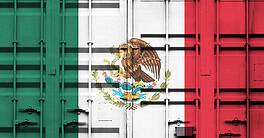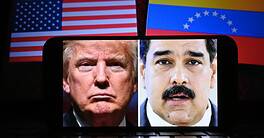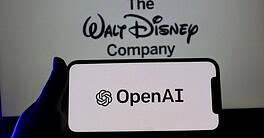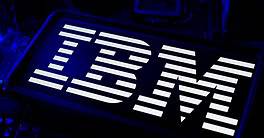Regional banks and their partners go global for growth.

Middle East and North Africa (MENA)-based institutions maintain their search internationally for opportunities to boost growth, which has been moderate, and bring much-needed economic diversification. With regional demand and investment tied to oil prices, many banks and companies see the need to look outside their domestic markets to raise income and assets.
That’s not to suggest they scorn opportunities at hand. There remains a significant focus on growth within the region, says Junaid Ansari, senior vice president of Investment Strategy and Research at Kamco Investment Company in Kuwait, with average yearly investment and M&A activity for listed companies more than $10 billion in the past decade. Still, he notes, “the overall level of investments and M&A activity has remained range-bound over the years.”
According to Ansari, MENA institutions’ main target markets for investments and M&A outside the region include the US, UK and EU. Although investments in the US and the UK are primarily in real estate, activity in France includes M&A transactions, such as the recent one between Gulf Insurance Group and AXA worth $264 million for AXA’s assets in the MENA region.
“Global markets continued to evolve during the unprecedented economic disruption and market volatility brought on by the Covid-19 pandemic,” says Hussain Abdulla, co-CEO at leading Doha-based investment bank QInvest, whose main markets, he notes, are the US, UK and EU.”
FDI Turns to Turkey
Turkey ranks high among expansion destinations, with a large market overall and a sizeable Islamic market, as well as growing opportunities in commercial banking, particularly lending. MENA banks have expanded there largely via acquisition. QNB Finansbank has assets of $25.1 billion with a significant retail franchise. Kuwait Finance House (KFH) owns Kuveyt Turk Participation Bank, an Islamic financing company and KFH’s largest subsidiary, with assets of $21 billion. Kuveyt Turk also has a subsidiary bank in Germany, KT Bank AG.
Other MENA banks in Turkey include the Commercial Bank of Qatar (Alternatifbank); Saudi National Bank (Turkiye Finans Katilim Bankasi); Burgan Bank Turkey; and Emirates NBD’s 2019 acquisition, Denizbank. Those banks have been hit by the substantial lira depreciation over the past few years, particularly the fall in value in 2021. Focusing on more stable economies is one way of protecting against FX volatility.
Within the MENA region, Egypt has been a focus for banks based in the Gulf Cooperation Council (GCC) nations over the past 15 years. Several have made acquisitions, attracted by the expanding retail banking market, as with the Turkish market. Banks that have acquired institutions in Egypt include QNB, Al Ahli Bank of Kuwait, Abu Dhabi Islamic Bank and First Abu Dhabi Bank (FAB). FAB, the largest bank in the UAE, acquired Bank Audi Egypt in 2021. The bank says this is its “first international acquisition in line with a targeted growth strategy in high potential markets.” More recently, FAB has been in talks to buy EFG Hermes, Egypt’s leading investment bank.
Saudi Arabia’s largest bank, Saudi National Bank (SNB), established following the merger of National Commercial Bank and Samba Financial Group in 2021, is actively looking at acquisitions outside its home market, including Asia and Europe. With the backing of the kingdom’s sovereign wealth fund, SNB is casting its eye at major global institutions, possibly including Standard Chartered and Credit Suisse, to become a global player in line with Saudi Arabia’s Vision 2030 plan to diversify the economy and boost the private sector.
Covid-19 was one of the critical reasons for the decline in M&A and investments made by MENA-listed corporates outside the region in 2020. However, 2021 witnessed the second-largest overseas investments and M&A in six years by MENA listed companies—double the level of 2020.
One symbol of the shift: Kuwait-based logistics firm Agility Public Warehousing recently built up a stake of 19% in UK-based and listed aviation services company John Menzies, with Menzies having rejected Agility’s prior takeover approaches.
Power Sector Plays
In the renewable energy and storage sectors, MENA companies and investment firms, particularly the GCC-based institutions, are ramping up their acquisitions and investments. Regional power and energy companies are planning to invest much more in the global renewables and clean energy market, diversifying their interests and aiming to reduce their longer-term reliance on fossil fuels.
Acwa Power, a Saudi-based institution whose portfolio is worth over $67 billion, is developing or planning renewable projects internationally in South Africa, Morocco, Vietnam, Cambodia, Indonesia, the Philippines and other countries, about half of its business targeted outside Saudi. Other MENA energy companies already have significant activities in Europe, the UK and the US in the renewables energy sector and will continue to expand in these markets.
Outside of the energy sector, MENA firms are also targeting Europe, Asia and sub-Saharan Africa in health care, agriculture, fintech, banking and e-commerce. Investcorp, the Bahrain-based investment house, recently acquired a majority stake in Italian cybersecurity company HWG. Investcorp remains active in the US real estate market. The firm recently acquired 64 industrial properties across seven major US markets for $640 million, bringing Investcorp’s US industrial real estate holding to around $3.5 billion.
India, a substantial market geographically close to MENA, may represent increasing interest for MENA banks and companies. Investcorp, for one, is becoming more active there. One of its portfolio companies, Xpressbees, a leading e-commerce logistics platform in India, recently raised additional funding giving a valuation of more than $1 billion. Rishi Kapoor, Co-CEO of Investcorp, says in a prepared statement, “The multifold increase in valuation … underscores the fact that Xpressbees sits at the strategic sweet spot of the consumption shift to digital and e-commerce in India, with a significant future growth potential within India’s $200 billion logistics industry.”
Over the last few years, regulators in the region have accelerated the pace of MENA economies’ integration with the rest of the world. This has included reforming existing laws and infrastructures. These efforts also come from a need to diversify the economy away from oil. As a result, both governments and corporates within the region and abroad have increased investments in non-oil sectors. Kamco’s Ansari says, “We expect the activity to accelerate further in coming years to build a more sustainable and stable revenue stream for governments and corporates in the MENA region.”
Following a strong rebound in 2021, the global economy is entering a slowdown amid threats from rising inflation, debt, and the war between Russia and Ukraine, which could endanger the recovery in emerging and developing economies. Before the Russia-Ukraine war, the World Bank expected global growth to decelerate from 5.5% in 2021 to 4.1% in 2022, as pent-up demand dissipates and fiscal and monetary support is unwound.
Covid-19 accelerated digitalization across the industry. This has played a vital role in sustaining businesses and reducing overheads in low-volume situations.
The Post-Covid Challenge
“As we enter a post-Covid era,” notes QInvest’s Abdulla, “the main challenge for banks in the Middle East will be ensuring that they do not lag global institutions in adopting innovative digital and fintech solutions.” Institutions will continue to search for technology-driven companies that will boost their product and service offerings.
Though heavily reliant on international backers, Jordan is trying to play its cards right and convert foreign aid checks into sustainable economic assets. Recovery from the Covid-19 induced recession will take time, especially if lockdown measures should continue. The World Bank expects GDP growth to recover in 2022.



